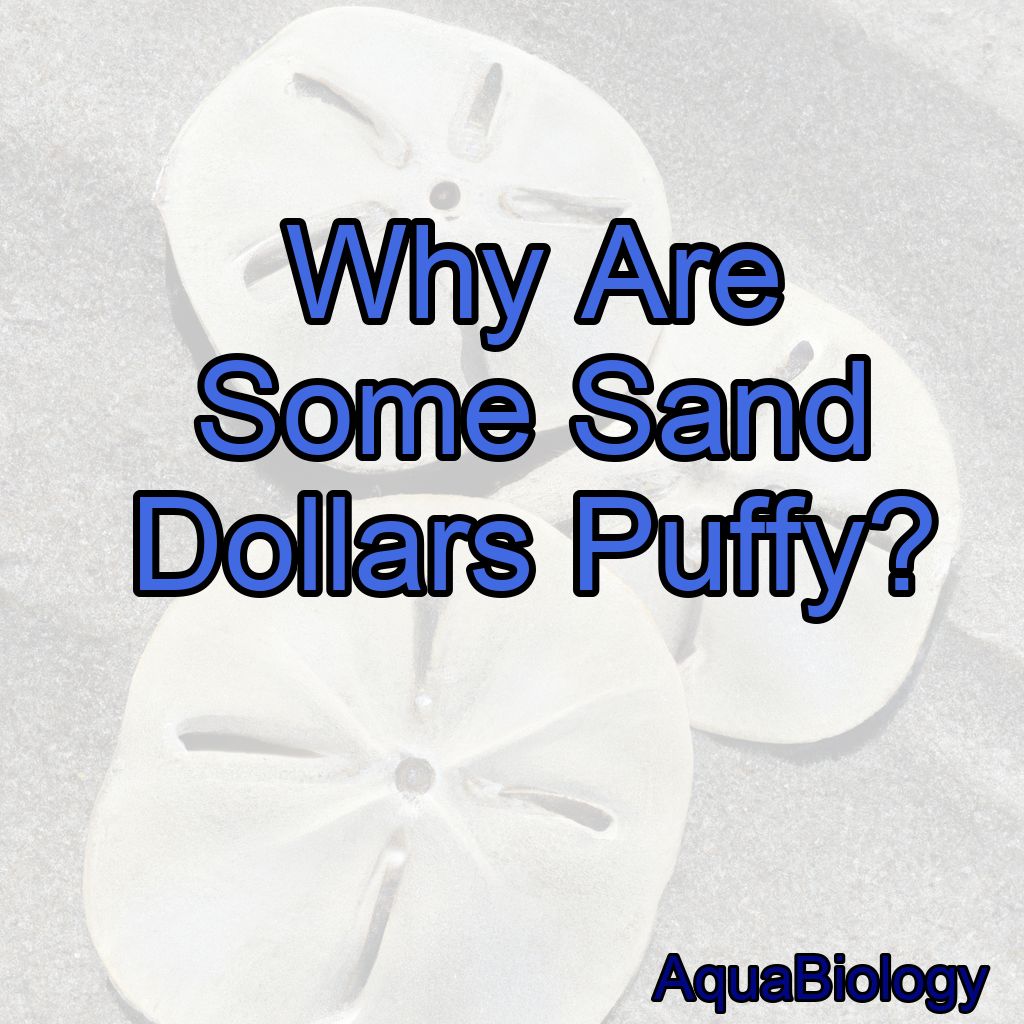As a marine biologist with a passion for studying sand dollars, I have come across many different types of these fascinating creatures.
Some sand dollars are puffy because they are alive, and their bodies are filled with water and soft tissue, giving them a rounded appearance.
One of the most interesting things I have noticed about sand dollars is that some of them are puffy or inflated, while others are flat and smooth.
In this blog post, I will explore the reasons why some sand dollars are puffy and what this means for their survival.
What Are Sand Dollars?
Before we dive into the topic of puffy sand dollars, let’s first define what a sand dollar is. Sand dollars are a type of echinoderm, which means they are related to sea stars and sea urchins.
They are flat, round, and disk-shaped, with a five-pointed star pattern on their surface. Sand dollars are found in shallow waters all around the world, and they play an important role in the marine ecosystem.
The Anatomy of a Sand Dollar
To understand why some sand dollars are puffy, it’s important to understand their anatomy.
Sand dollars have a hard exoskeleton made of calcium carbonate, which protects their internal organs.
They also have a water vascular system, which allows them to move and feed.
The water vascular system is made up of a series of tubes and canals, which are filled with water.
Sand dollars move by contracting and expanding their internal muscles, which pushes water in and out of their water vascular system.
Why Are Some Sand Dollars Puffy?
Now, let’s get to the question at hand.
Why are some sand dollars puffy?
The answer lies in their feeding habits.
Sand dollars are filter feeders, which means they feed on small particles in the water.
They do this by extending their tube feet out of their body and waving them around in the water to capture food particles.
When a sand dollar is actively feeding, it will be puffy and inflated because it is filled with water.
This allows it to extend its tube feet further out of its body, increasing its feeding range.
Puffy Sand Dollars and Predation

While being puffy may be beneficial for feeding, it can also make sand dollars more vulnerable to predators. When a sand dollar is puffy, it is easier for predators like sea stars and crabs to flip them over and attack their soft underside.
For this reason, sand dollars have developed a defense mechanism to protect themselves when they are not actively feeding. They can release water from their water vascular system, causing them to become flat and smooth, and making them harder for predators to flip over.
The Importance of Sand Dollars
Sand dollars play an important role in the marine ecosystem. They help to keep the ocean floor clean by feeding on small particles and debris, and they also provide food for predators.
In addition, sand dollars are an important indicator species for the health of the ocean. If their population declines, it could be a sign of larger ecological problems.
Conclusion: 5 Facts About Puffy Sand Dollars
1. Sand dollars are echinoderms with a hard exoskeleton and a water vascular system.
2. Puffy sand dollars are filled with water, which allows them to extend their tube feet further out of their body for feeding.
3. Being puffy can make sand dollars more vulnerable to predation, so they have developed a defense mechanism to become flat and smooth.
4. Sand dollars play an important role in the marine ecosystem by feeding on small particles and providing food for predators.
5. The health of sand dollar populations can be an indicator of larger ecological problems in the ocean.
FAQs
Why are some sand dollars fuzzy?
Sand dollars can appear fuzzy due to the presence of small spines or cilia on their surface, which help them move and bury themselves in the sand.
Why is my sand dollar fuzzy? Sand dollars can appear fuzzy due to the presence of small spines or cilia on their bodies, which are used for movement and feeding.
Additionally, some species of sand dollars may have a thin layer of velvety fur-like material covering their bodies.
What to look for when looking for sand dollars?
When looking for sand dollars, it is important to look for areas with shallow water, gentle waves, and sandy bottoms.
Look for circular or star-shaped imprints on the sand, indicating the presence of sand dollars below.
It is also important to look for live sand dollars, which are brown or purple in color and have tiny spines covering their body.
Avoid taking live sand dollars from the beach, as they are an important part of the ecosystem.
Are there different types of sand dollars?
Yes, there are different types of sand dollars, including the common sand dollar, the keyhole sand dollar, and the flat sand dollar.
Each type has distinct physical characteristics and can be found in different regions of the world.
How can you tell if a sand dollar is real? A real sand dollar will have a fuzzy texture on its underside and small, hair-like spines on its surface.
It will also be heavier than a fake sand dollar, which is often made of plastic or resin.
What is a puffy sand dollar?
A puffy sand dollar is a live sand dollar that has not yet died and dried out, causing it to retain its natural round shape and a slightly inflated appearance.




